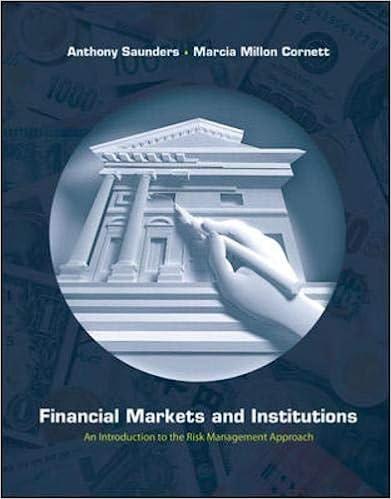Answered step by step
Verified Expert Solution
Question
1 Approved Answer
To build a high - level model so you can size a PROJECT FINANCE LOAN and see leverage on a project. The operations have been
To build a highlevel model so you can size a PROJECT FINANCE LOAN and see
leverage on a project. The operations have been kept very simple so you can focus on the debt calculations. As an analyst or associate in a lending or equity role this would form a major part of your work. Your role would be to analyse different structures such as repayments and determine which one provides the best solution to the equity investor.
Instructions
Build out the cashflows to CADS by including revenue, expenses, and maintenance capex project life is years
Revenue and expenses should be inflated at paie every year the values increase by from last year
Maintenance does not have inflation, it is $ in year
Calculate the unlevered project IRR ie the IRR without debt
Calculate the debt repayments for the cases provided:
V DSCR sculpted repayments similar to the inclass
V Linear debt repayment principal will be equal in every period
V Annuity repayment total debt service will be constant every period
Calculate the cashflows to equity ie CADS less debt service and calculate the following outputs for and :
Maximum debt size to achieve the DSCR constraint
Required Equity total project capital cost less the debt size
Leverage as a debt total funding required
Levered "equity" IRR ie IRR to equity with debt in the project
The DSCR each period do not simply restate it calculate it
The year in which the min DSCR is hit. If there are multiple years when the minimum is hit, show only the first date
Explain in a few sentences in the Excel file why the results calculated above are logical
Hints and other notes
Lay out a debt schedule indicating the principal balance at the beginning of the period, the principal amortized during the period, and the principal balance at the end of the period. You will need to insert additional lines into the starting spreadsheet, so you have room for calculations
Make certain the loan is repaid ie the loan balance by the end of the loan tenor. It shouldn't be repaid before or after the end of the loan tenor
Hints and other notes
Lay out a debt schedule indicating the principal balance at the beginning of the period, the principal amortized during the period, and the principal balance at the end of the period. You will need to insert additional lines into the starting spreadsheet, so you have room for calculations
Make certain the loan is repaid ie the loan balance by the end of the loan tenor. It shouldn't be repaid before or after the end of the loan tenor
In setting up your model, try and make it flexible so that the assumptions can be modified dynamically. Whenever possible, rely on formulas and cell references rather than hardcoded numbers. If you need more assumptions, add them
Although possible to use Excel's goal seek function, try not to All of the solutions can be solved without goal seek
Watch your units!
A placeholder is NOT provided for the outputs, please add these yourself in a clear manner
Conceptual assumptions
The project is a partnership and does not pay any taxes. Recall that Partnerships are flowthrough entities passing the tax benefits or liabilities though to the individual Partners who own a stake in the project. You can safely ignore taxes in this assignment
The debt is at the Project level. There is no need to model any of the cash flows at the level of any individual Partner or Partners.
There are no cash subsidies rebates RECs, productionbased incentives, etc. for the project.
The project achieves its Commercial Operation Date COD on January of Year and all debt is in place from January of Year
All years are days ignore leap years
All cash flows revenue operating expense, major maintenance capex, interest expense, principal amortization occur once per year on December
Interest expense is compounded once per year on December
All construction and commissioning costs including any interest accrued during construction are already captured under Total Capital Cost.
Although the annual electrical output of solar panels in the field typically displays a level of degradation over time, assume that the electrical output is the same in all years.

Step by Step Solution
There are 3 Steps involved in it
Step: 1

Get Instant Access to Expert-Tailored Solutions
See step-by-step solutions with expert insights and AI powered tools for academic success
Step: 2

Step: 3

Ace Your Homework with AI
Get the answers you need in no time with our AI-driven, step-by-step assistance
Get Started


